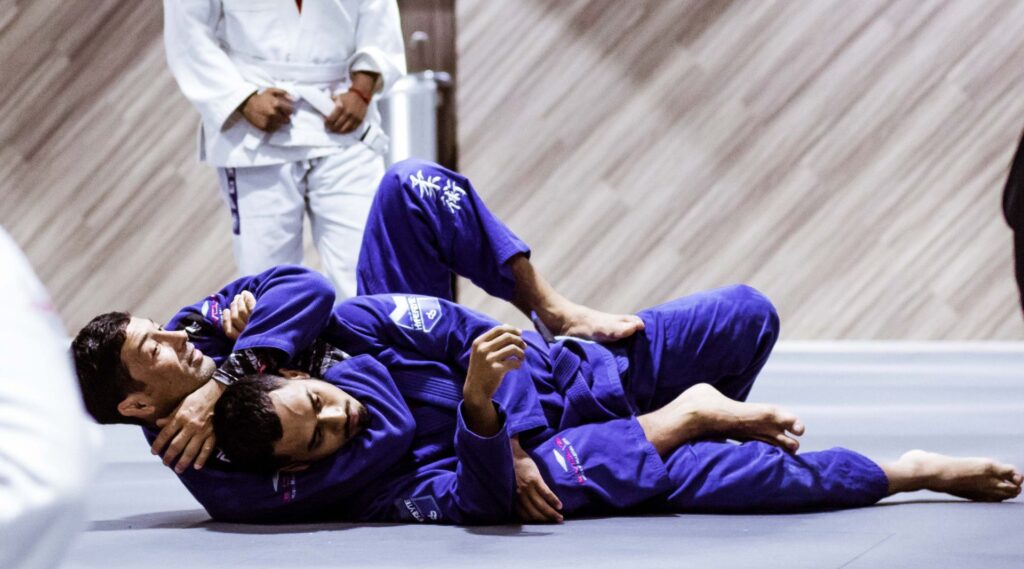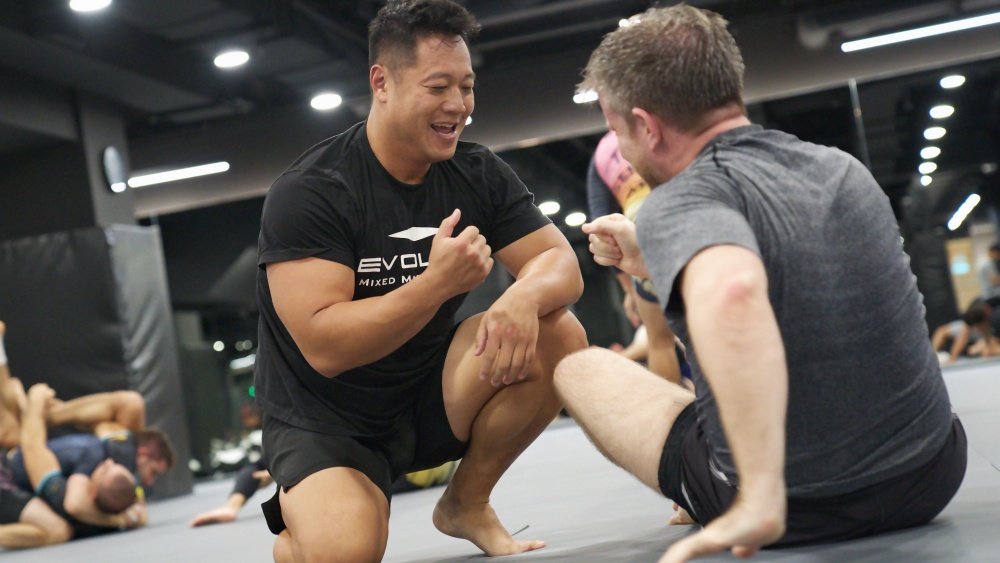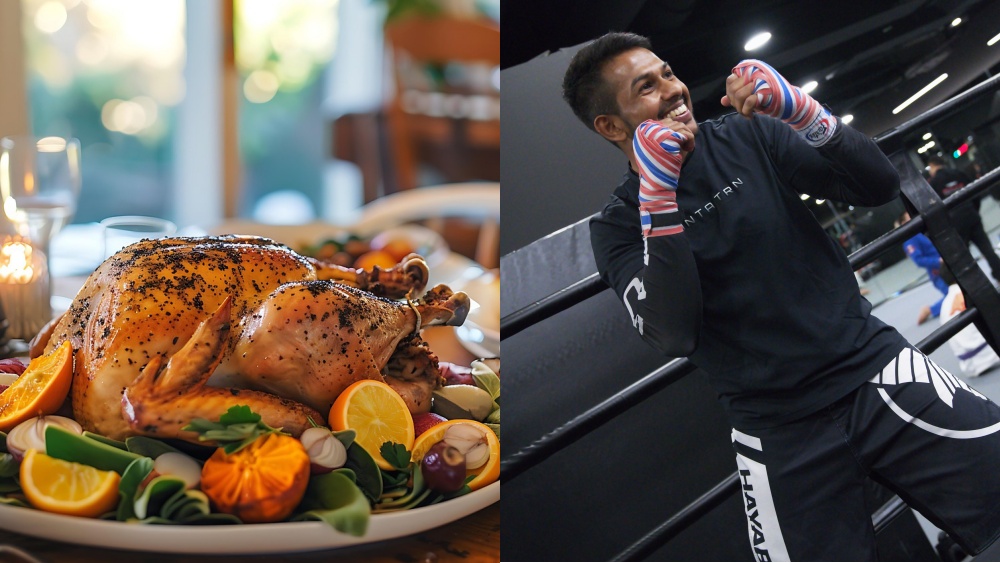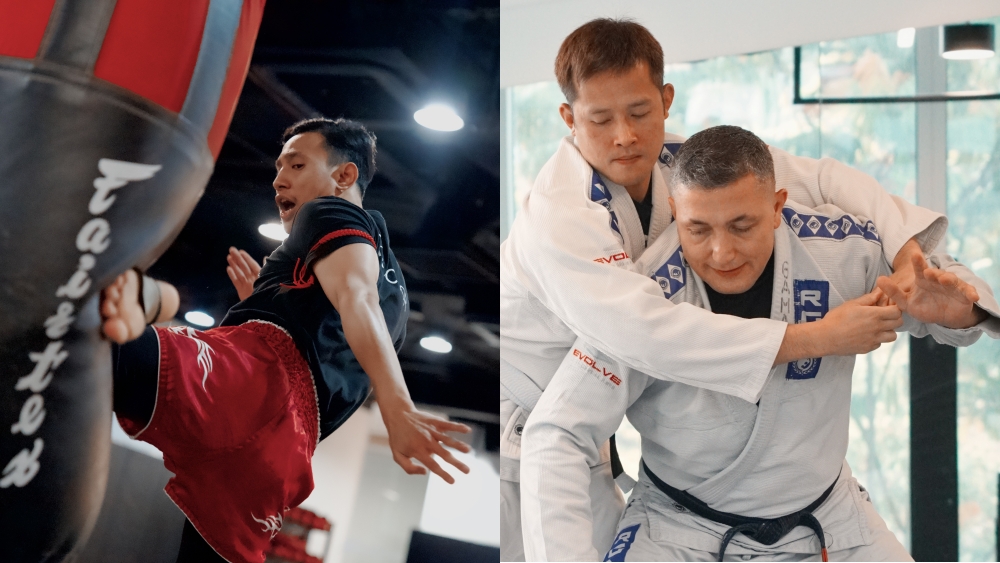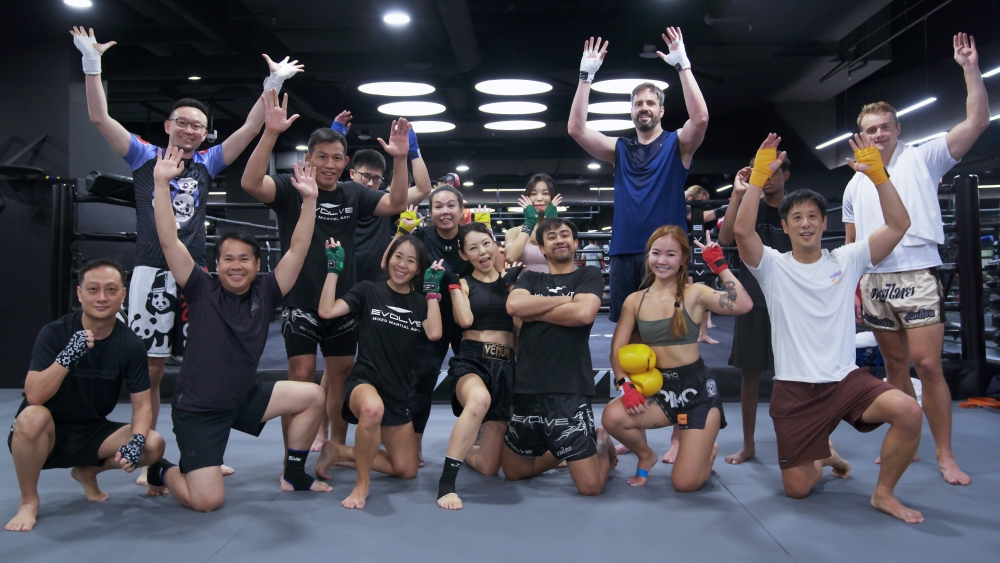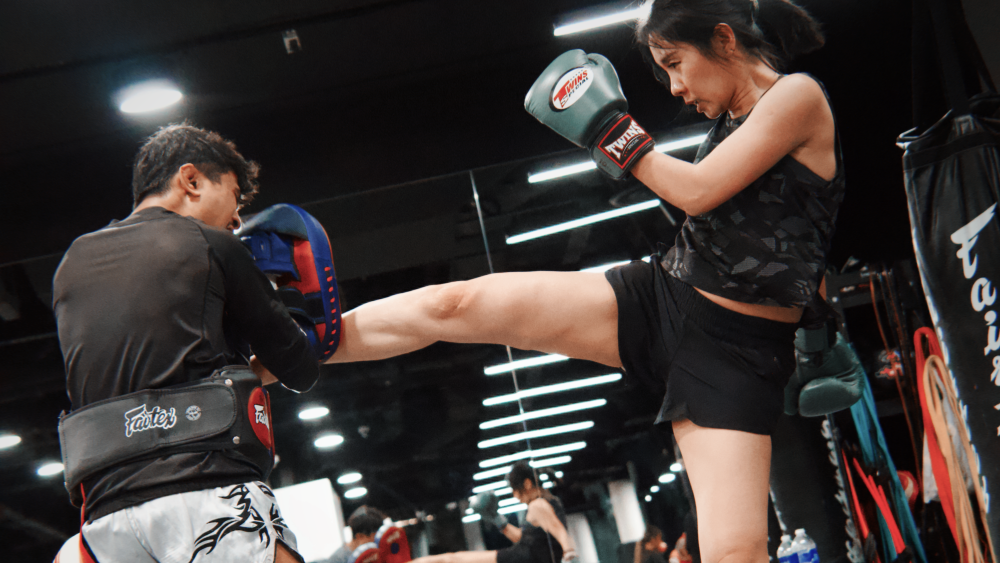You don’t need to learn every martial art technique ever developed to be able to defend yourself. Many experienced martial artists would even caution against learning too many techniques since that often means you haven’t taken the time to master any of them.
“I fear not the man who has practiced 10,000 kicks once, but I fear the man who has practiced one kick 10,000 times.” – Bruce Lee
That quote sums up the ideal mentality you should have as a martial artist. What’s the point of knowing 10,000 techniques when you can barely execute any of them? Fewer is often better when it comes to martial arts. Observe any top combat sports athletes, and you’ll notice they have a few dozen techniques they mostly rely on.
It’s one of the reasons why martial arts like Muay Thai are generally viewed as more effective than martial arts like Taekwondo. Less than a couple of hundred techniques are used in Muay Thai, compared to over 3,000 kicking techniques alone in Taekwondo. As a result, Muay Thai fighters spend most of their time practicing effective techniques they use often like roundhouse kicks, low kicks, and teeps, while Taekwondo students spend most of their time learning new techniques.
This article will take a look at some of the most tested and proven techniques used in martial arts, so you can add them to your arsenal and be better prepared for common self-defense scenarios.
Ten Must-Know Martial Arts Techniques For Self-Defense
Ready to find out what some of the most effective martial arts techniques are? Let’s jump right into our list:
The push kick is one of the most used strikes in Muay Thai and for many good reasons. One of the most important being it’s a low-risk technique that can be used to keep aggressive opponents off you. Also, you can use a push kick to gauge the distance between you and an aggressor. It’s the kicking equivalent of a jab. Thirdly, teeps work well as a way to disrupt your opponent’s offense. You can fire one down the line anytime an opponent throws a kick or lunges at you and knock them off-balance.
The teep can be thrown with either your lead or rear leg, but it’s often thrown with the lead leg since that covers more distance.
Here’s how to perform a push kick:
- From your fighting stance, raise your foot off the ground until it is almost at the same level as your hips. This is called chambering.
- Push your foot forward, generating momentum from your hip.
- Connect with the ball of your foot at full extension.
- Quickly bring your leg back to your fighting stance by reversing the movement. Pull your foot back to your hip before bringing it back down.
Drill the teep until it becomes part of your muscle memory, it’s a technique that can be used in many self-defense situations.
2) The Guillotine Choke
The guillotine choke is one most used chokes in mixed martial arts, and it can be just as effective in self-defense scenarios. It can work as a blood or air choke depending on how the pressure is applied. A blood choke cuts off the oxygen supply to the brain, while an air choke restricts the movement of air through the windpipe.
A traditional guillotine choke is done with one arm going over an opponent’s head and wrapping underneath their neck. You then grab your attacking arm with your other arm to apply pressure to their neck. An arm-in guillotine is one of the most common variations of the standard guillotine, and it involves trapping an opponent’s arm along with their neck. It’s the guillotine version of an arm triangle.
The guillotine is an excellent technique for self-defense since it can be secured from multiple positions that often present themselves during a fight. For example, an attacker might try to tackle you to the ground and most people don’t know the dangers of shooting in for takedowns without keeping their heads up. Watch any novice Brazilian Jiu-Jitsu students, and you’ll see them getting caught in guillotines often when they go for takedowns.
The technique can also be executed from the guard, turtle top, or mount position, positions you might find yourself in self-defense situations. It’s always nice to have a few techniques that can stop any fight in an instant.
Here’s how to perform a guillotine choke:
- Wrap your arm over and under your opponent’s head when they have their head down and face pointed at the ground. Keep the palm of your attacking arm facing you.
- Use your other arm to grab your attacking arm. A thumbless overhand grip works well, but you can also use other grips like a chain-link or cup-and-saucer grip.
- Pull your opponent’s head up, while pushing your hips forward, and squeeze your elbows in towards your chest to finish the choke.
3) The Rear Naked Choke
The rear naked choke is one of the most powerful martial arts techniques ever developed. It’s the most popular choke used in mixed martial arts for good reason. It’s extremely easy to learn and it’s tremendously effective on opponents of all sizes. It’s a blood choke that cuts off the blood supply to the brain, leading to a loss of consciousness.
An attacker being significantly stronger than you means nothing once you secure a rear naked choke. Once it’s locked in, it’s only a matter of time before an attacker goes to sleep.
Here’s what it looks like:
- The rear naked choke works best from the top back mount position, so it starts with you taking your opponent’s back and using your legs to hook theirs. You can secure their torso with an over-under grip.
- Slide one of your arms around your opponent’s neck, so the cup of your arm is underneath their windpipe. Grab the bicep of your other arm with your attacking arm.
- Place your other arm at the back of your opponent’s head and squeeze your elbows together to finish the choke.
4) Mount Escape
One of the worst places you can ever find yourself during a fight is the mount bottom position. From here, an opponent can unload powerful punches and elbows on you, while your defensive options are limited. You generally never want to allow an opponent to mount you in a self-defense situation, but you might find yourself on the bottom if a fight hits the ground.
Two of the simplest ways to escape mount bottom are shrimping to regain half guard or full guard, and the popular bridge and roll technique.
To get a mounted opponent off you with a bridge and roll:
- Control the arm in the direction you plan to take them so they can’t use the arm to post. It is a crucial little detail that’s essential to pull off the technique.
- Bring your feet close to your behind, while keeping them flat on the floor. Bridge your hips off the ground as high as you can and roll so you end up in the top position.
5) L-Sweep
The L-sweep is another useful tool you should have in your self-defense arsenal. It’s one of the most effective reversals you can pull from the bottom guard. You generally never want to be on your back in a self-defense situation since that leaves you vulnerable to third parties.
The L-sweep is executed from your guard, which means you have your legs wrapped around your opponent’s torso while you’re at the bottom.
To perform an L-sweep:
- Control your opponent’s arm in the direction you plan to take them and use your other hand to control their posture.
- Turn on your sides, so one of your legs is by your opponent’s base, while your other leg goes across their chest.
- Scissor your legs, pushing on your opponent’s chest with your inside leg, while your other leg pulls them toward you. This knocks them off-balance, allowing you to take the top position.
Knees and elbows are powerful strikes that can end a fight at any moment, and Muay Thai fighters typically do their best work in the clinch. Self-defense scenarios often end up in clinch situations, so you want to know how to control opponents in the clinch and bombard them with knees and elbows.
Muay Thai fighters also execute throws and trips from clinch positions and those skills can be just as useful in self-defense situations.
7) Basic Strikes
You should take some time to master the fundamentals of striking if you want to be an effective defender. This includes the jab, cross, lead hook, rear hook, lead uppercut, rear uppercut, front kick, calf kick, and roundhouse technique. You’ll be a handful for the average person once you understand the distance and timing needed to execute these techniques.
8) Blocking Fundamentals
You won’t last long in a self-defense situation if every strike thrown at you lands cleanly. You need to practice the fundamentals of defense like using head movement to avoid strikes, keeping your arms in front of your face for straight attacks, bringing your guard to the side of your head for looping attacks, and using your elbows and movement to protect your body. You should also learn how to check kicks even though most attackers don’t throw kicks.
Knowing how to use your feet can be an extremely effective defensive tool in self-defense situations, particularly pivoting. It’s an effective way to get out of the path of straight attacks.
The leg kick is another Muay Thai technique that works well in self-defense situations. Throwing it with your lead leg is called an inside leg kick while throwing it with your rear leg is the most popular variation. Leg kicks are one of the most used techniques in Muay Thai despite fighters knowing how to defend against them. That’s how effective the technique can be.
It’s a low-risk technique that’s often used to target the outer part of the thigh or the calf muscle in competitions. Inside leg kicks are used to target the inner part of the thigh in competitions and you can use them to target the groin in self-defense situations. It isn’t uncommon for professional Muay Thai fighters to accidentally hit their opponent’s cup while throwing inside leg kicks.
Here’s what the technique looks like:
- From your fighting stance, pick your foot off the ground and swing it toward your opponent’s leg as if your leg was a baseball bat.
- Pivot your non-kicking foot and drive your hips toward your opponent to generate more power. Don’t snap your leg at your opponent as if it were a whip, instead drive through your opponent’s leg as if you were trying to slice it in half.
- Make contact with the hardest part of your shin. One or two well-placed leg kicks are all it takes to significantly restrict an attacker’s movement and quelch their will to fight.
10) Running
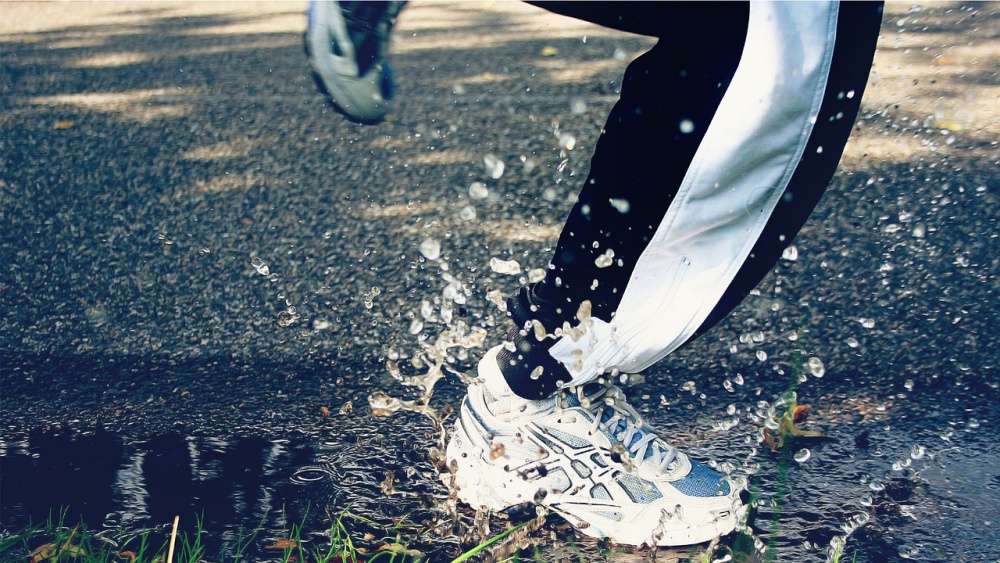
Running isn’t technically a martial arts technique, but it’s one of your most effective tools when it comes to self-defense. At times, the best thing you can do is get away from a dangerous situation. You might have a hard time doing that if you can’t remember the last time you went for a run or exerted yourself.
For example, if a group of people is looking to cause you harm, your best bet is typically to run away or get somewhere they can’t reach. You’ll need to be a top-level striker to stand a chance against multiple attackers, and there’s still a high level of risk. It only takes one attacker to sneak behind you with or without a weapon to cause you serious harm.
It’s best to avoid multiple attackers or self-defense situations that you know you can’t win. Make running or other cardiovascular exercises a part of your fitness routine, so you’re in shape to run at least a few miles if you ever need to get away from danger. Running is the oldest survival tool. It’s the instinctive way animals get away from dangerous predators. We wouldn’t have the instinct if it wasn’t an effective self-defense tool.
With all that’s said, preparation is key. We all know the saying ‘you’ll never know when it’ll happen.’ You’ll never know when you need to defend yourself. If you are interested in learning martial arts for self-defense, consider a complimentary introductory class with us!
Book your complimentary trial class with our World Champions below!
If you have any other questions regarding Evolve MMA and the programs we offer, you can get in touch with our membership executives at the following locations:
Evolve MMA (Far East Square)
26 China Street
Far East Square #01-01
Singapore 049568
Phone: (65) 6536 4525
Evolve MMA (Orchard Central)
181 Orchard Road
#06-01 Orchard Central
Singapore 238896
Phone: (65) 6536 4556
Evolve MMA (KINEX)
11 Tanjong Katong Road
#02-52 KINEX
Singapore 437157
Phone: (65) 6288 2293
Evolve MMA (Clarke Quay Central)
6 Eu Tong Sen Street
#04-18 Clarke Quay Central
Singapore 059817
Phone: (65) 6226 2150
Evolve MMA (Star Vista)
1 Vista Exchange Green
#02-26A The Star Vista
Singapore 138617
Phone: (65) 6539 9590
